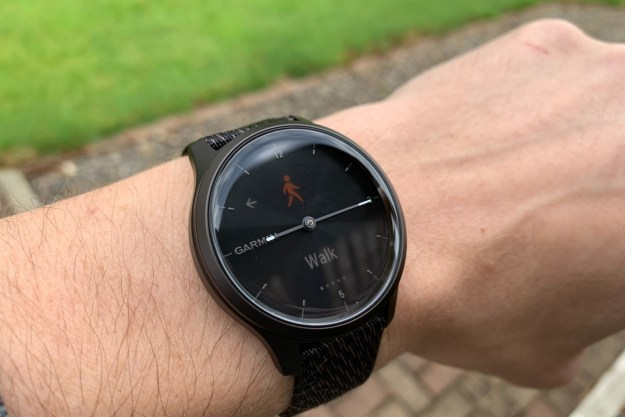
- Timeless aesthetic
- Robust Garmin Connect App
- Hands move to show stats
- HR and Pulse Ox Sensors
- No buttons
- Dull AMOLED displays
- Finicky gesture control
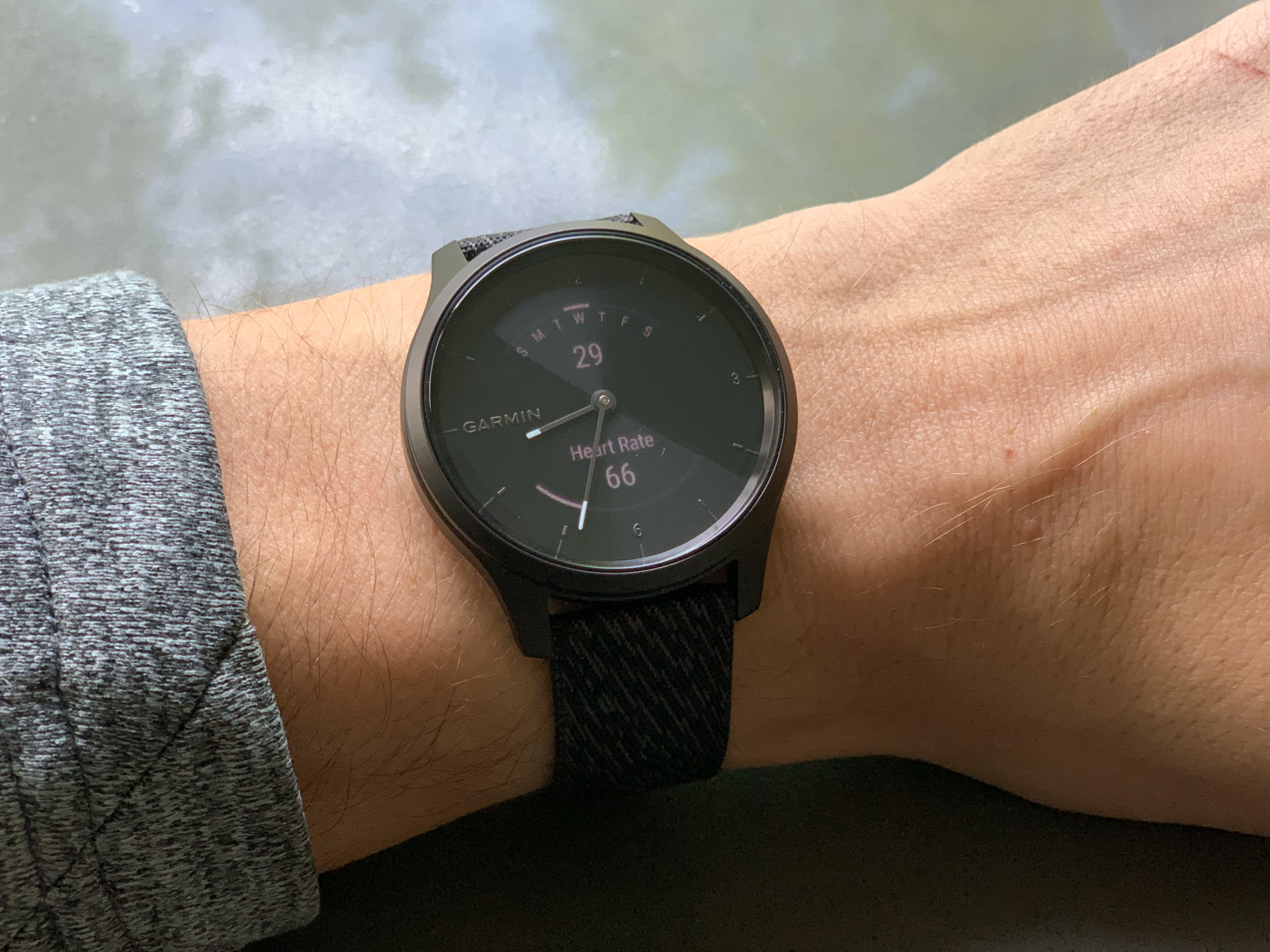
Fitness watches tend to have a distinct look: Chunky, brightly colored, rubberized. You’re sending a message to the world that you make fitness a priority — or, at least, that you buy the stuff that makes fitness look like a priority.
For some, sending that message is part of the appeal. I’ll be the first to admit that throwing on a watch that could help me sail around the world makes my day feel a little more intrepid, even when I haven’t left my neighborhood in weeks. But if you aren’t the type to sport a 26.2 bumper sticker, the Garmin Vivomove Style may be for you. It promises all the inner workings and data of a fully fledged fitness tracker and smartwatch, with none of the look.
When I first got my hands on the Vivomove Style, I was shocked at how light it was. With the nylon strap, the timepiece comes in at a minimal 35 grams. With a 42 x 42 x 11.9mm case size, I was expecting it to be heavier, especially considering all the tech that gets packed into it, but the all-aluminum build makes for a watch that is the opposite of chunky. While the unit I reviewed had the “Black Pepper” nylon band, the Vivomove Style has a few different options available in terms of case color and band choice. For those looking to up the quality a bit, there’s also a Vivomove Luxe line, which features stainless steel cases and upscale band options.

Deceptive look
At first glance, the Vivomove Style’s face looks incredibly simple. With physical hands and nothing that alludes to any smart functions, it looks like a basic run-of-the-mill wristwatch. But these looks are quite deceiving. The Vivomove Style is a touchscreen, and at the top and bottom of the watch face are AMOLED displays for showing customizable data fields. The AMOLED displays are indistinguishable from the watch face, so you don’t get the usual obvious transition from screen to non-screen area, which makes the covert nature of the Vivomove Style possible.
When you move your wrist to bring the watch to your face, the screen lights up with two data fields for a quick glance at some preselected stats. The gesture control works most of the time and has the option to be turned off completely, kept on during an activity, or always left on. When it doesn’t work, it gets frustrating quickly. The Garmin Venu had the same issue, but the saving grace was the “always on” option for its AMOLED screen. The Vivomove Style doesn’t get this option. You can double tap the face to wake it up, but it diminishes the covert nature of the Vivomove Style, and instead makes it look like you think your watch is broken.
Tapping away at the top and bottom of the glass allowed me to navigate more easily, but this took the better part of three days to get used to. Even then, sometimes my taps weren’t always registered by the screen, and my once pristine, incognito smartwatch was covered in fingerprints, which drove me nuts. It really begs the question, why no buttons? A single button on the side would do a lot to alleviate some of the frustration I had with the touchscreen. But alas, the Vivomove Style is buttonless, and not better for it.
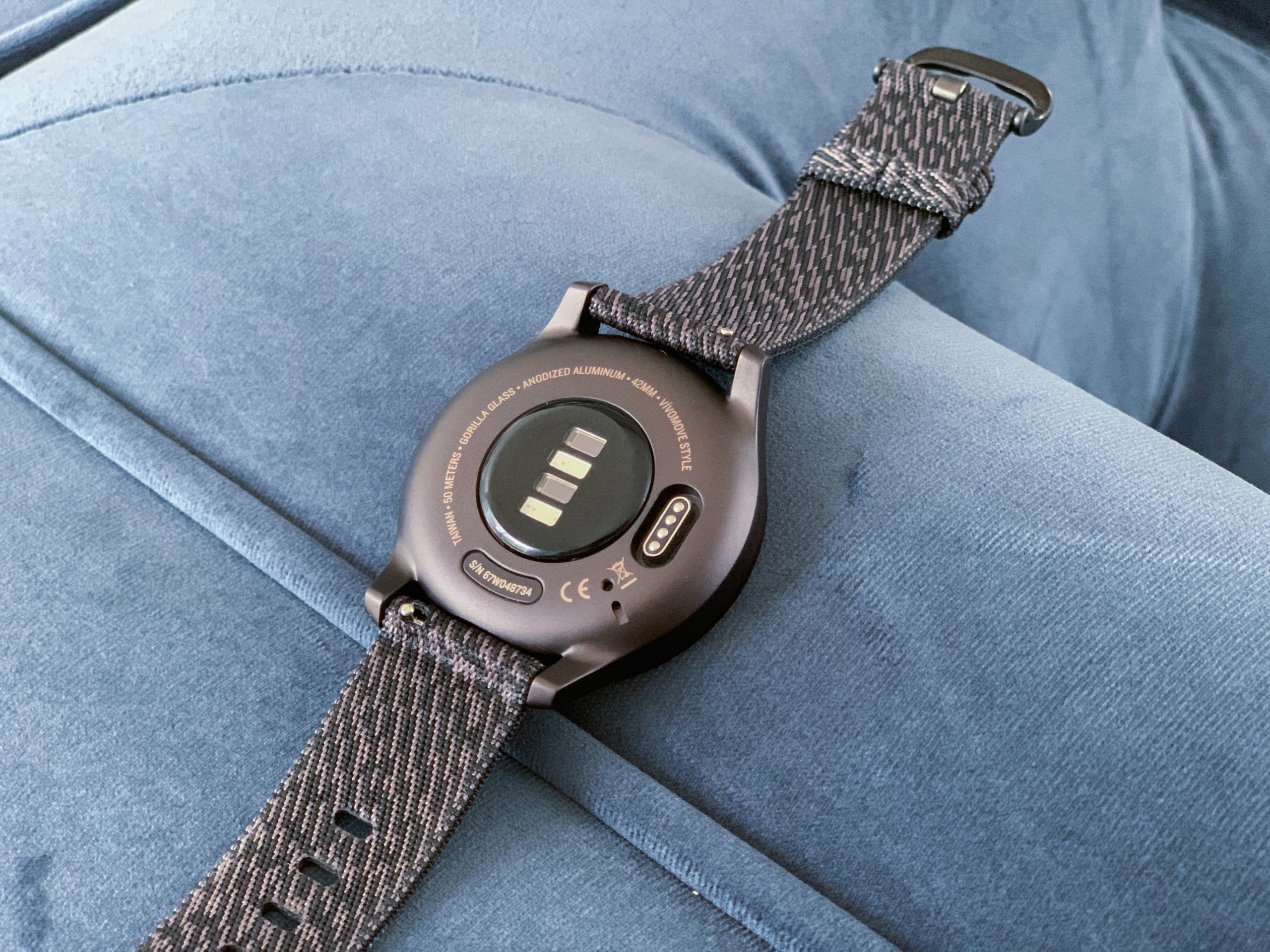
Once the displays are on, you can swipe to see everything that the Vivomove Style has to offer. This is where the Vivomove Style and the whole Garmin suite of tracking abilities shine. You’ll find the usual stats like steps taken, floors climbed, calories burned, and heart rate, as well as smart notifications for iPhone and Android. Anyone familiar with Garmin’s metrics will be happy to see Auto Goal, which learns what your current activity is and sets daily goals to push you. Sleep monitoring, intensity minutes, body battery, stress tracking and VO2 max are also included, as is hydration monitoring. These metrics are what make joining the Garmin ecosystem worth it.
The Vivomove Style pulls a neat party trick to display the data: The physical watch hands move to indicate your status, among the different levels of heart rate zones, battery, etc. While this isn’t really necessary, after two weeks of playing with the Vivomove Style, I still get a kick out of the interaction between the physical hands and the AMOLED screens. Of course, that means the watch hands are no longer telling the time. If this bothers you, you can manually lock them to show time during an activity, versus your heart rate, but you’ll need to do it again every time you start a new activity.
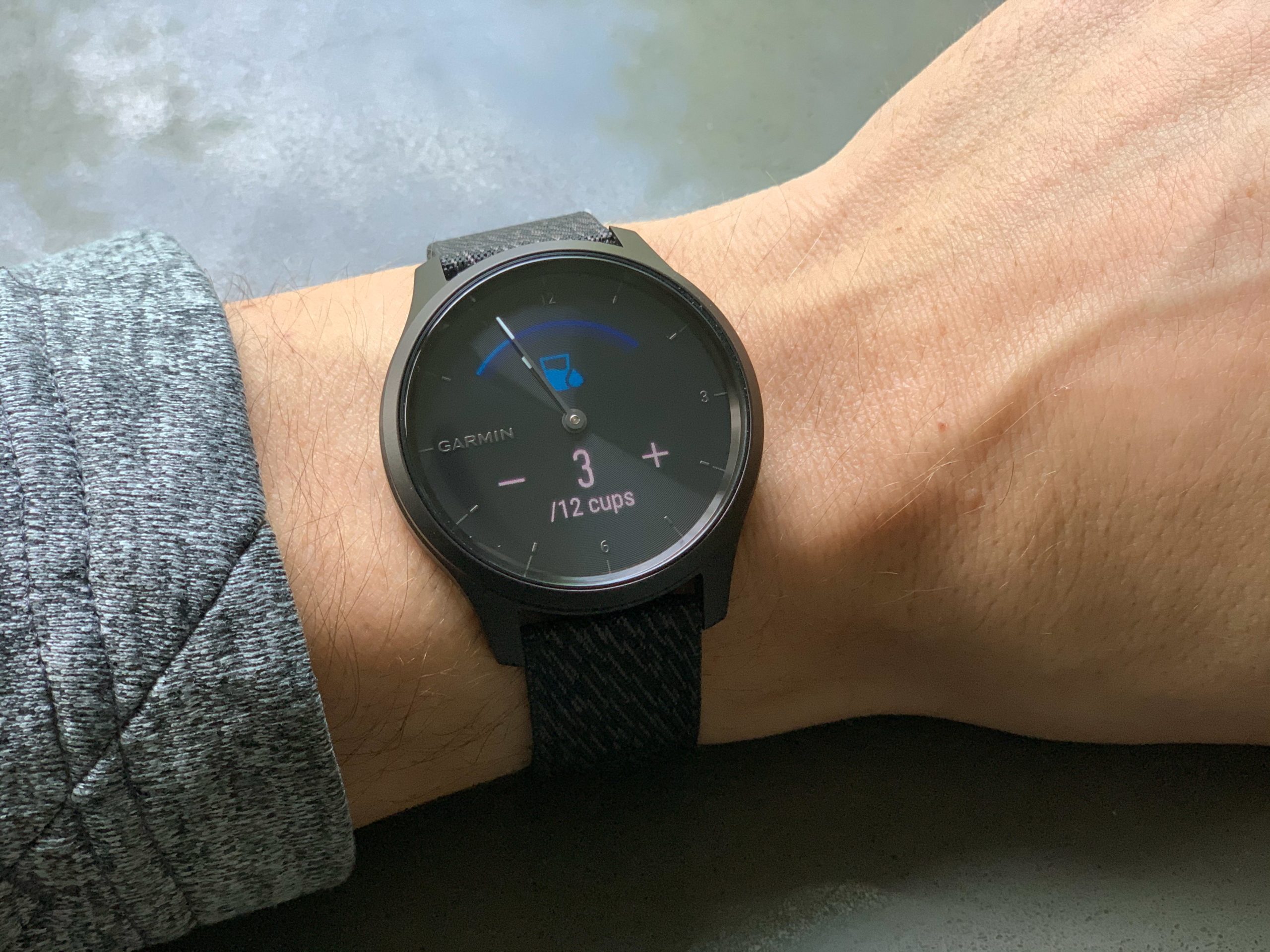
Disappointing screen
On Garmin’s Venu, the AMOLED displays are a thing of beauty. On the Vivomove Style, they’re a bit dull. I’m not sure if it’s due to the gap between the touchscreen and the surface of the AMOLED, but it’s not nearly as clear as the Venu. The AMOLED displays also eat up more battery than the standard memory in pixel (MIP) display used by other Garmin watches. I was getting around four days of battery life with daily workouts, and I can only wonder how much more life I would have gotten had Garmin used different displays.
The Vivomove Style includes a heart-rate monitor, barometric altimeter, accelerometer, and Pulse Ox sensor. In lieu of having its own GPS unit, the Vivomove Style relies on your smartphone’s GPS for location information — which means you’ll need to have the Garmin Connect app running in the background for route tracking, distance, and speed information. This makes starting up activities like walking, running, biking, or swimming a bit more cumbersome because it requires that you pull out your phone if the Connect app isn’t running.
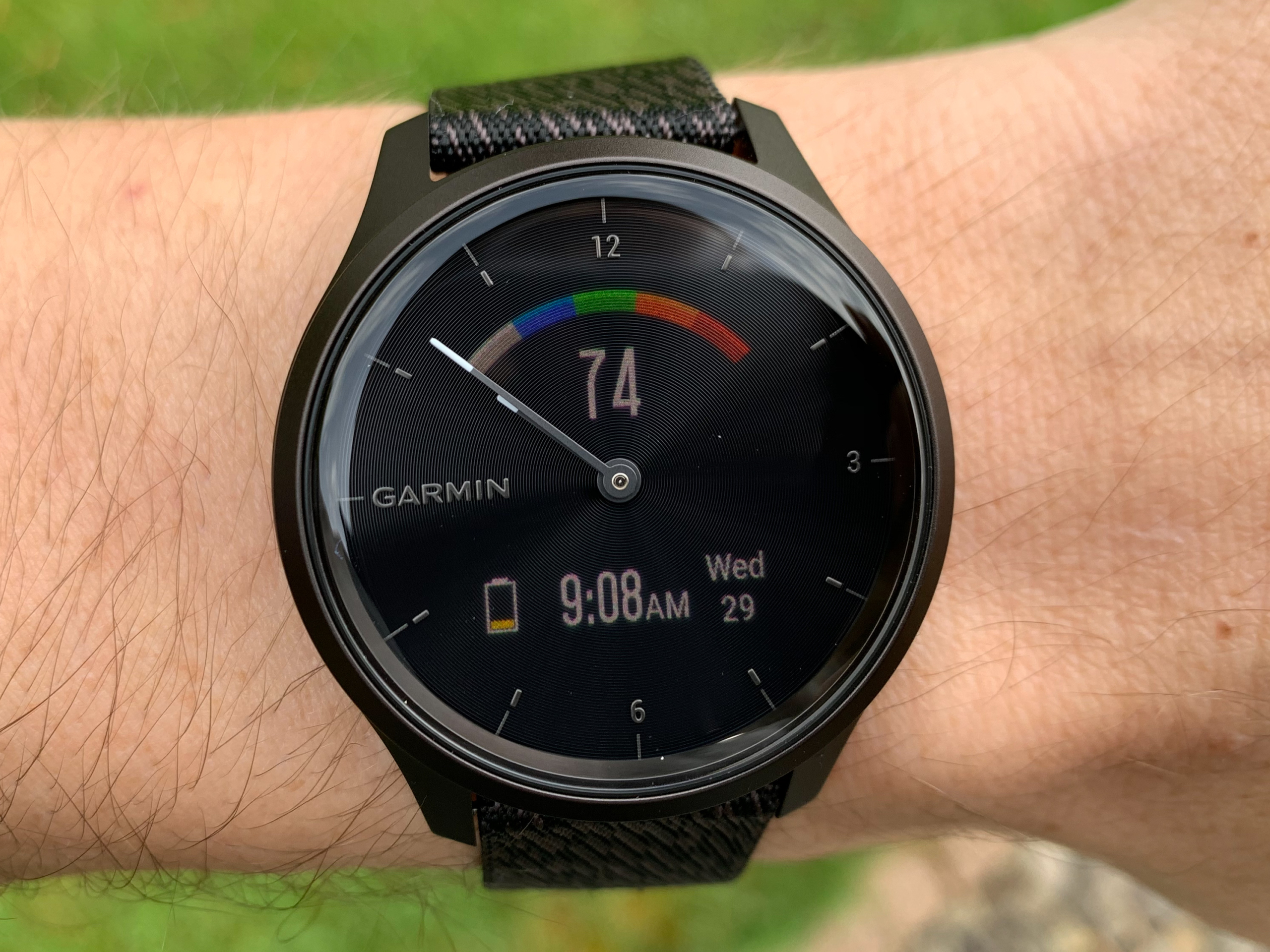
Once you’re in an activity, the Vivomove Style does a good job of tracking you, with runs including cadence, time, pace and distance timers. Meanwhile, weight-training activities have a rep counter and swimming has underwater heart rate tracking. There are a number of other activity profiles available on the Vivomove Style, but none are terribly robust in the metrics provided. The Vivomove Style is great for training with heart-rate zones, but if you’re looking for more detailed data like swim stroke analysis, auto pausing, or training plans, you’re going to need to look elsewhere.
Garmin covers the Vivomove Style with a standard one-year warranty, which includes defects, but not cosmetic flaws like scratches and dents, or accidents.
Our take
The Vivomove Style may be the most subtle fitness watch you can buy today. But the concessions it makes to style, including the lack of any physical buttons, also make it trickier to use. It gets the job done due in large part to the comprehensive Garmin Connect App, but could use a little more polish to its interface.
Is there a better alternative?
The Fossil Hybrid Smartwatch HR is the closest thing to the Garmin’s ability, and it falls short on features like touchscreen, customizable data fields, and the know-how of the Garmin Connect app.
How long will it last?
Garmin products are built to last and I have no doubt the Vivomove Style can take a beating for at least a few years.
Should you buy it?
If you hate the look of standard fitness trackers and smartwatches, yes. The Vivomove Style is a very handsome option that, while quirky, has a great array of health sensors and a saving grace in the Garmin Connect app.
Editors' Recommendations
- The app for your Garmin wearable is getting a huge overhaul
- The Garmin Vivomove Trend is a powerful smartwatch with a sleek disguise
- Garmin’s $150 Vivosmart 5 fitness band has some stiff competition
- Garmin Forerunner 45 vs 35: Is the striking new style enough reason to upgrade?
- Garmin Forerunner 245 versus 235: Do maps and music make the step up worthwhile?



